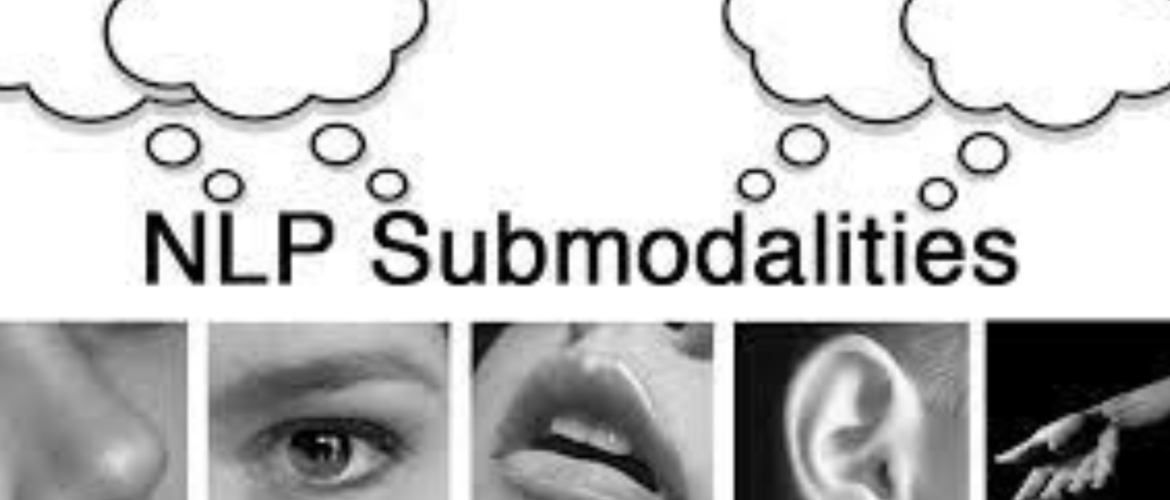Blog
Understanding Submodalities in NLP: The Building Blocks of Experience
- December 19, 2023
- Posted by: SEETHALAKSHMI SIVAKUMAR
- Category: Neuro-Linguistic Programming

Introduction
Submodalities are an integral part of Neuro-Linguistic Programming (NLP), which focuses on how language and perception affect our thoughts, emotions, and behaviors. In this article, we will explore the concept of submodalities, their impact on our memories, and the importance of being aware of sensory language.
What are Submodalities?
In NLP, submodalities refer to the finer distinctions within our sensory experiences. They are the building blocks that shape our perception of the world around us. Submodalities involve the specific qualities and characteristics of our senses, such as visual, auditory, kinesthetic, taste, and smell.
Altering Memories with Submodalities
One of the fascinating aspects of submodalities is their ability to influence and alter our memories. By consciously manipulating the submodalities associated with a particular memory, we can change how we perceive and feel about that experience.
For example, let’s say you have a negative memory of a past event. By adjusting the submodalities associated with that memory, such as changing the visual image to black and white or reducing the volume of the associated sounds, you can effectively diminish the emotional impact of that memory. This technique can be incredibly powerful in helping individuals overcome traumatic experiences or phobias.
The Importance of Sensory Language
Being aware of sensory language is crucial in NLP. By using specific sensory words and descriptions, we can enhance our communication and influence others more effectively. For instance, instead of saying “I understand,” you can use sensory language by saying “I see what you mean” or “I hear what you’re saying.” This helps to establish a stronger connection and rapport with the other person.
NLP Submodalities List
Here is a list of the primary submodalities that NLP focuses on:
- Visual: The visual submodality involves the images and visual representations we create in our minds.
- Auditory: The auditory submodality relates to the sounds, tones, and voices we hear in our internal dialogue.
- Kinesthetic: The kinesthetic submodality encompasses the sensations, feelings, and emotions we experience in our bodies.
- Taste and Smell: The taste and smell submodalities pertain to the sensory experiences associated with our sense of taste and smell.
Essentials of Senses and Submodalities
Understanding the relationship between our senses and submodalities is essential in NLP. By recognizing how different submodalities affect our experiences, we can gain greater control over our thoughts, emotions, and behaviors. This awareness empowers us to make positive changes in our lives and overcome limiting beliefs or negative patterns.
Suggested Senses and NLP Submodalities Exercise
Here is a simple exercise to help you explore and understand the relationship between senses and submodalities:
- Choose a specific memory or experience you would like to modify.
- Identify the submodalities associated with that memory, such as the visual image, sounds, and feelings.
- Experiment with altering the submodalities. For example, change the visual image to black and white or adjust the volume of the associated sounds.
- Observe how these changes affect your perception and emotional response to the memory.
- Reflect on the potential implications and applications of this exercise in your personal growth and development.
Interested in world-leading 1:1 NLP Training?
If you are interested in delving deeper into the world of NLP and mastering the techniques of submodalities, consider enrolling in our world-leading 1:1 NLP Training. Our program offers comprehensive guidance and personalized coaching to help you harness the power of NLP for personal and professional growth.
Conclusion
Submodalities are the building blocks of our experiences. By understanding and utilizing submodalities effectively, we can transform our memories, enhance our communication, and gain greater control over our thoughts and emotions. Whether you are seeking personal growth or professional development, exploring the world of submodalities in NLP can be a transformative journey.
